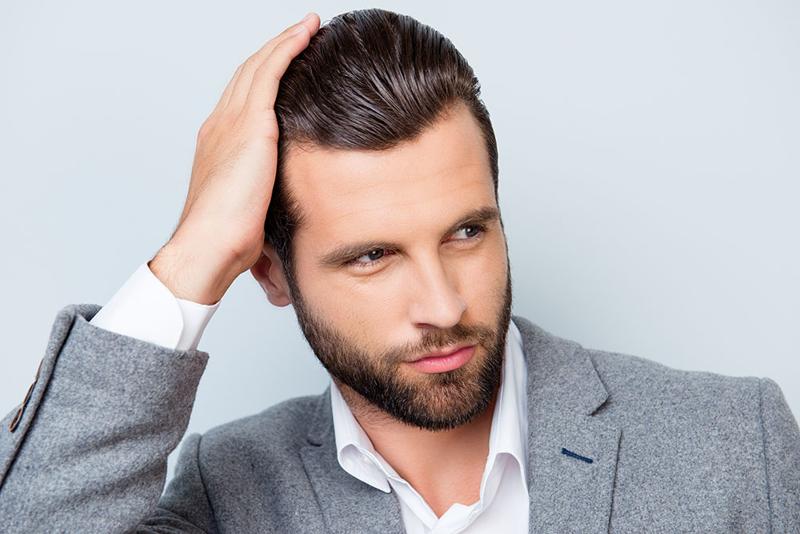What Is the Best Age for a Male Hair Transplant?
Hair loss in men is a common and often distressing experience. It can begin as early as the late teens or early twenties and progressively worsen over time. The most frequent cause is androgenetic alopecia, commonly referred to as male pattern baldness, which is largely determined by genetic and hormonal factors. While this condition affects men differently, it often follows a recognizable pattern of receding hairline and thinning on the crown.
As hair loss progresses, many men begin exploring solutions that offer long-term or permanent results. Among these solutions, Male Hair Transplant in Dubai has become one of the most sought-after options for men seeking to restore a youthful appearance and regain confidence.
What Is a Hair Transplant?
A hair transplant is a surgical procedure that moves healthy hair follicles from a donor site—typically the back or sides of the scalp—to areas where hair is thinning or balding. There are two primary techniques: Follicular Unit Transplantation (FUT) and Follicular Unit Extraction (FUE). Both techniques have evolved with medical advancements, offering natural-looking outcomes and minimal scarring.
Why Age Matters in Hair Transplants
The age of the patient plays a pivotal role in hair transplant outcomes. Age affects the extent and predictability of future hair loss, hair characteristics, and the viability of donor hair. Younger men experiencing hair loss may not yet have a stable hair loss pattern, which can complicate the planning of a transplant and impact long-term results.

The Ideal Age Range for Hair Transplants
While there is no strict rule about the "perfect" age, most hair restoration specialists suggest that the ideal age for a male hair transplant falls between 25 and 45 years. This recommendation is based on the following considerations:
Predictability of Hair Loss
By the mid-20s, hair loss patterns become more predictable. This enables surgeons to design a hairline and strategy that considers both current and future hair loss, helping to avoid the appearance of inconsistent density or unnatural spacing as more hair is lost with age.
Psychological Readiness
Emotional maturity and realistic expectations are critical. Men over 25 generally approach the decision more thoughtfully and understand the limitations of the procedure, such as the fact that hair transplants don't prevent further hair loss in untreated areas.
Stabilized Hormonal Changes
Younger individuals may still be undergoing hormonal fluctuations that accelerate hair loss. Waiting until the early to mid-20s gives time for these changes to stabilize, making hair restoration more reliable and long-lasting.
Hair Transplants in Younger Men: A Cautious Approach
Some men under 25 seek transplants due to early onset baldness or severe thinning. In such cases, a conservative approach is often recommended. Doctors might suggest alternative treatments such as medications (like minoxidil or finasteride) to slow hair loss and postpone surgery until the hair loss pattern becomes more established.
Hair Transplants in Older Men: What to Consider
Men over 45 may also consider hair transplantation, especially if they have realistic expectations and sufficient donor hair. However, older men often have more extensive hair loss, which can limit the achievable density in one session. Nevertheless, older patients benefit from stable hair patterns and a lower likelihood of sudden future loss, making long-term planning more straightforward.
Evaluating Hair Transplant Readiness
Regardless of age, several key factors help determine whether someone is ready for a hair transplant:
Hair Loss Pattern
An established pattern of baldness is crucial for proper planning. If hair loss is still aggressive or unpredictable, it might be best to delay surgery.
Donor Hair Availability
The density and quality of hair in the donor area significantly influence the success of the transplant. Younger men may have better density, but future loss must be considered to avoid depleting donor reserves prematurely.
Overall Health
Good physical health is important for surgical recovery and hair growth. Patients with medical conditions affecting circulation, healing, or immune response may not be ideal candidates.
Commitment to Aftercare
Post-operative care is essential for optimal results. Patients must be committed to following medical advice, avoiding strenuous activity, and taking prescribed medications when needed.
A Personalized Decision
There is no universal answer to the question of the best age for a hair transplant. Each case is unique, and decisions should be based on individual needs, expectations, and medical advice. What works for one man in his twenties may not suit another in his forties. Comprehensive consultation and assessment are critical steps in making the right choice. The best outcomes often stem from a combination of timing, technique, and tailoring the approach to each person's evolving hair loss journey.
Final Thoughts
The right age for a hair transplant varies from one person to another. However, the general recommendation leans toward waiting until the mid-20s when hair loss patterns are more evident, and long-term planning becomes more feasible. Delaying the procedure slightly can often result in better, more sustainable outcomes.
